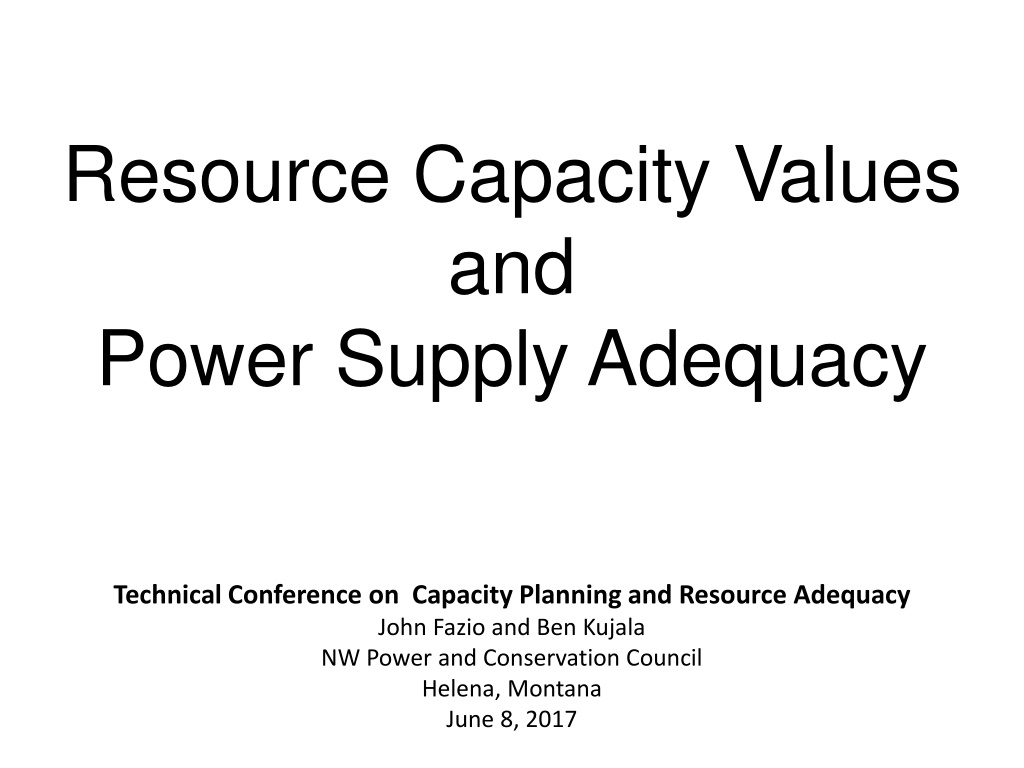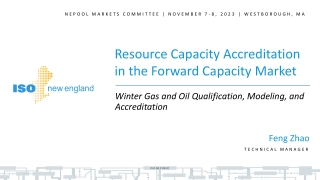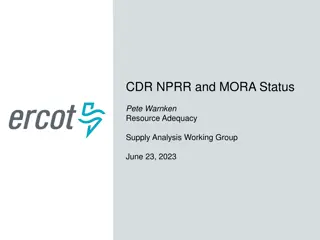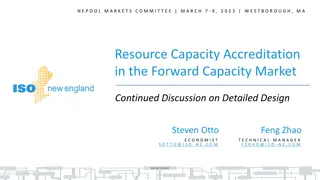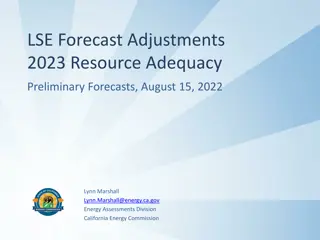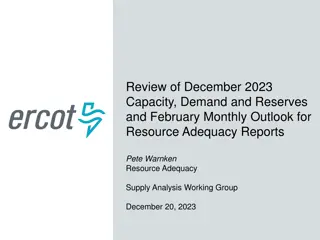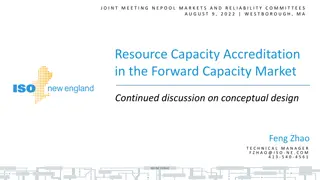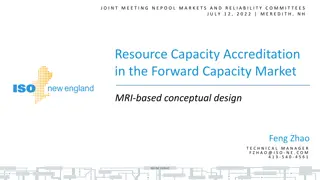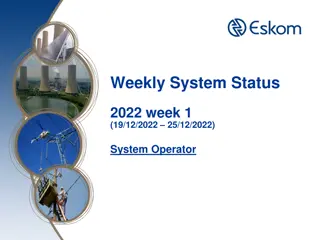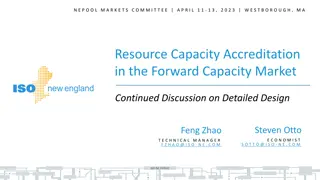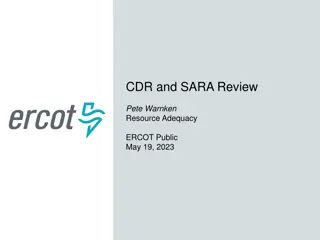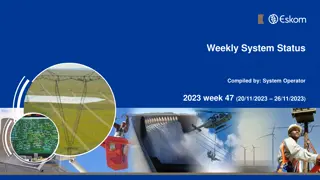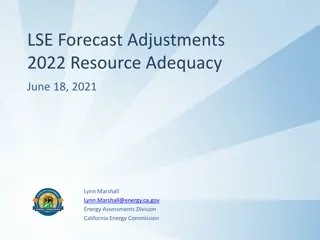Resource Capacity Values and Power Supply Adequacy Conference Highlights
Explore insights from the Resource Capacity Values and Power Supply Adequacy Technical Conference, covering topics like integrated vs. standalone capacity values, utilizing hydro storage to increase capacity, and the 2021-22 Adequacy Summary. Learn about the importance of integrated capacity values and the impact of key factors on power supply adequacy.
Download Presentation

Please find below an Image/Link to download the presentation.
The content on the website is provided AS IS for your information and personal use only. It may not be sold, licensed, or shared on other websites without obtaining consent from the author. Download presentation by click this link. If you encounter any issues during the download, it is possible that the publisher has removed the file from their server.
E N D
Presentation Transcript
Resource Capacity Values and Power Supply Adequacy Technical Conference on Capacity Planning and Resource Adequacy John Fazio and Ben Kujala NW Power and Conservation Council Helena, Montana June 8, 2017
Integrated vs. Standalone Integrated capacity value equals the standalone value plus capacity gained from the interaction with hydro storage During off-peak hours1, non-hydro resources can generate instead of hydro, which saves water and increases hydro s peaking capacity 1If applicable, prices permitting. 2
Why Integrated Capacity is Higher Using Hydro Storage to Increase Capacity 32000 Increases hydro peaking by 24,000 MW-hours or 1,500 MW/hour over 16 peak hours. 24000 Megawatts Blue Curve = Before Red Curve = After 16000 Replace hydro generation during off- peak hours with other generation to save 24,000 MW-hours or 3000 MW/hour over 8 off-peak hours. 8000 0 5 10 15 20 25 30 Hour of Day 3
Standalone and Integrated Capacity Values using Gorge Wind Standalone Capacity Added Wind Reduction in MW needed for adequacy 3000MW 90MW Standalone Capacity = 90/3000 3.0% Integrated Capacity Added Wind Reduction in MW needed for adequacy 3000MW 286MW Integrated Capacity = 286/3000 9.5 % 4
7th Power Plan ASCC Values (relative to nameplate capacity) Resource Q1 Q2 Q3 Q4 Solar PV 0.26 0.81 0.81 0.42 Energy Efficiency1 1.24 1.01 1.14 1.16 Gorge Wind 0.03 0.11 0.11 0.08 Gas-Fired Turbine 1.28 1.00 1.02 1.20 Geothermal 1.28 1.00 1.02 1.20 1The nameplate capacity value for EE is roughly estimated to be 1.9 times the energy savings during winter and 1.2 times the energy savings in summer. The ASCC values are applied to the nameplate capacity value for EE to get the integrated capacity value. 5
2021-22 Adequacy Summary1 2021 LOLP = 6.9% Boardman, Centralia 1 and N Valmy 1 plants retire (1,457 MW) New load forecast shows lower winter peaks New Canadian operation increases US hydro generation in summer but lowers hydro generation in October New assumption add spot market access in October Reduced balancing reserves slightly increase hydro sustained peak 2022 LOLP = 7.2% Colstrip 1 and 2 and Pasco plants retire (352 MW) 317 aMW of EE and 100 aMW of codes & standards savings Effective Capacity Needed in 2021 400 MW (adding 400 MW in 2021 also covers the adequacy need in 2022) 1LOLP values and needed capacity can change significantly depending on future demand and Southwest market availability. 6
2022 LOLP Heat Map Winter Spot Market 3400 18.1 3000 19.0 2500 21.0 2000 23.6 Load High 5.8 6.2 7.2 8.6 Med 1.8 2.1 2.7 3.4 Low 7
2022 Capacity Needed (MW) Winter Spot Market 3400 1500 3000 1600 2500 1830 2000 2100 Load High 115 200 385 650 Med 0 0 0 0 Low 8
Projected Installed Nameplate of Coal Generators Serving the Region 8000 7000 6000 5000 4000 3000 2000 1000 0 2017 2018 2019 2020 2021 2022 2023 2024 2025 2026 2027 2028 2029 2030 2031 2032 2033 2034 2035 Current 7th Plan (Feb 2016) 9
